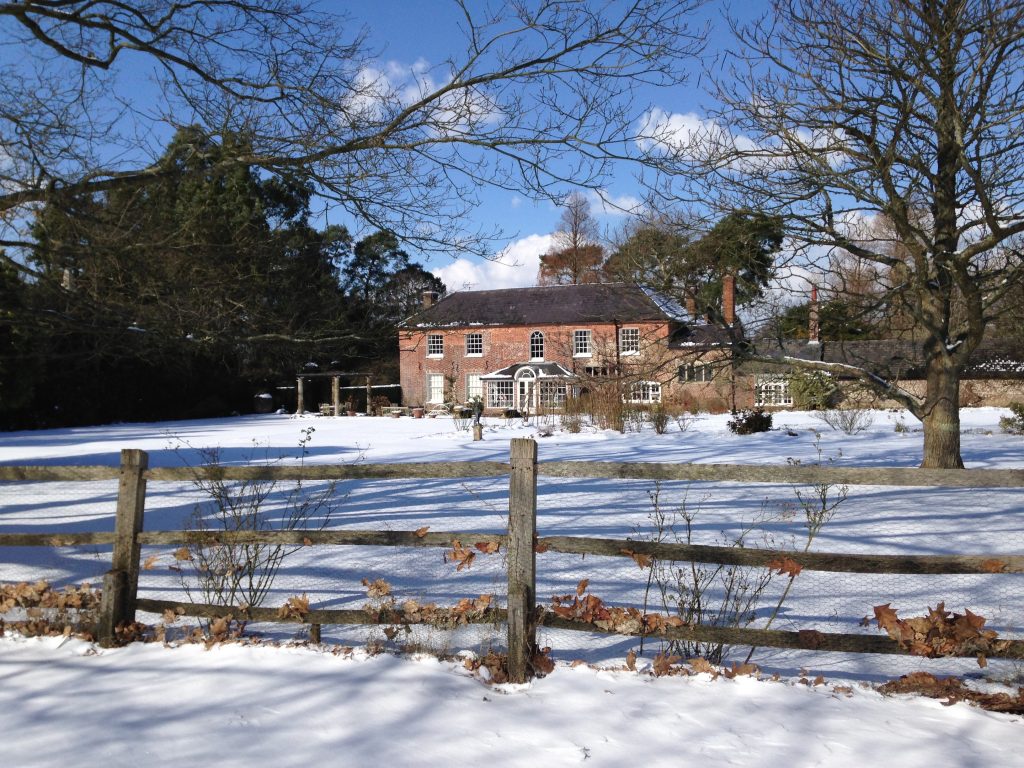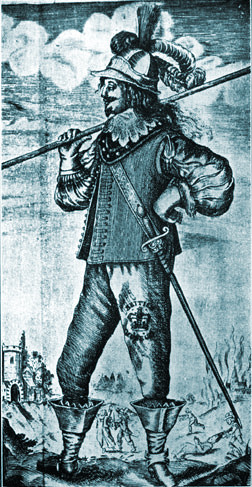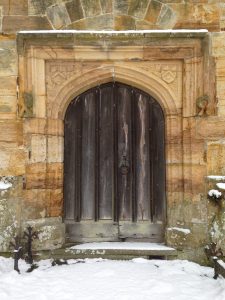A Historical Footnote – visited by ODOmatt on the 28th February 2018.
A chip in the wall of an old country church marks the spot where, one Sunday afternoon in 1634, one of Britain’s most notorious soldiers tried to assassinate a rival.
This is where historical footnotes get into the fine print, but if you stick with it, this nondescrpit indentation illuminates a whole world of scandal, war and adventure in the age of revolution.

Thomas Who?
Thomas Lunsford was born into decaying minor nobility in 1610 at Whyly House in East Hoathly, a small Sussex village. The house is still standing to this day: part private home, part secluded hotel. A long, straight, side road leading to a horse stud will take you to Whyly and, rather incredibly, a public right of way leads directly through the garden of the house.
Overly excited by the snowfall, I instead decided to take the long route to Whyly through the crisp, inviting fields and woods. When I finally arrived, with lungs of ice and creaking bones, I managed to take one photo before my phone got stroppy in the cold and shut down.
Standing in full view of the owners, trying desperately to warm up my phone, I realised it was probably for the best and sidled round the building nonchalantly.

From humble(ish) beginnings, Sir Thomas Lunsford rose to become one of the most famous and trusted of the king’s men during the English Civil War, gaining a reputation for barbarity, cruelty and cannibalism.
Cutting a tall, intimidating figure, he was by all accounts a narcissistic ruffian, described by his cousin Lord Dorset as “a young outlaw who neither fears God nor man”.
Stoyle (2015) goes so far as to argues that Sir Thomas was one of the key figures responsible for the image of the ‘cavalier’ archetype, still prevelant in popular imagination today.
Hated and feared by the public, prone to violence and drinking he described himself as “fierce enough to eat children”. It is unlikely, however, that he really was a cannibal but the rumours speak of his reputation among contemporaries.

When King Charles I was defeated by the parliamentarians and his head and body parted ways, Lunsford was imprisoned before gaining permission to travel to the colony of Virginia to hook up with his Pelham cousins. He married the widow of the first secretary of state and joined the Virginia militia before dying around 1643.
Bloody Sunday
But back to snowy rural Sussex.
For many generations there had been two prominent families in the area, the Lunsfords and the Pelhams, the latter of which were doing significantly better than the former by the mid 17th century.
His family’s fortunes ailing, Lunsford started illegally hunting deer on the Pelham’s land. He was caught by his cousin Sir Thomas Pelham and fined £1,000 to the King and £750 to Pelham.
Totally broke, our man couldn’t afford to pay up and took the only logical step. Hiding behind a grave stone with two pistols at the ready, as his cousin Pelham left a church service one Sunday, Lunsford attempted to shoot him.
The bullet missed (suspicious given he was such a keen hunter and fearless solider) and ricocheted off the stone wall, lodging in the door*. He was then arrested and imprisoned at Newgate.
A local curiosity, the bullet was stuck in the door for many years and keen historians find the trail goes cold in 1932 when the door was replaced, but it’s likely to be in the possession of a local family.
In a daring escape from Newgate Prison, Lunsford fled to France where he joined the army and eventually returned to offer his services to the king in the Bishops’ War and his fine was forgiven.
Rising up the ranks of Charles’ army, Lunsford was eventually appointed Governor of the Tower of London. Public outrage ensued at this appointment of the notriously, violent soldier and he was forced to leave, eventually finding himself imprisoned at the Tower himself.

Though the original western church door in East Hoathly is now long gone, the sturdy Norman stone work, where the bullet first struck, is standing proud.
We searched high and low for the bullet hole and concluded that we’d found it, despite the whole wall being full of indentations, scratches and crumbling stone…
It’s not every village can boast a possible cannibal, let alone an accomplished military officer known for his murky past, daring prison escapes and a reputation strong enough to cause public rioting.
In my eyes East Hoathly is home to a bonafide historical footnote star.
Getting there
There are two entrances to East Hoathly via the A22. Heading south just after passing Halland, it’s best to take the first left off the roundabout.
The unnamed road leading to Old Whyly house is the very first possible left hand turning. Easily missed, if you find yourself in the village you’ve gone too far. There is plenty of parking in the village centre. Church Marks Lane, just behind the Forester’s Arms pub will take you to the church.
Nearby
As mentioned, you can visit the Old Whyly House where Sir Thomas was born and even stay the night if you desire. The church is located in the centre of the village a mile from the house.
East Hoathly is home to a classic country pub The King’s Head as well as Muffins cafe. There’s also a hairdresser if you’re in need and a homeopathic vet if you get desperate.
Locals will point you in the direction of several beautiful walks, it’s highly recommended to follow the public footpaths near Old Whyly House, either circling round to the village centre or heading through the horse stud.
* There are conflicting accounts of the exact events that transpired at the church. The one I refer to seems the most authoritative, see sources below for more info.
Sources and Further Information
I’ve only skated the tip of the iceberg of the fascinating life of Sir Thomas Lunsford. The following sources will lead you further down the rabbit hole.
Illustrated Tales of Sussex, Christopher Horlock (2017)
The Cannibal Cavalier: Sir Thomas Lunsford and the Fashioning of the Royalist Archetype, Mark Stoyle (2015)
http://www.counterfire.org/articles/book-extracts/18676-christmas-1641-the-maddest-christmas-that-i-ever-saw
http://bcw-project.org/biography/sir-thomas-lunsford
http://www.easthoathlyandhalland.co.uk/the-villages
http://www.oldwhyly.co.uk/sussex-bed-and-breakfast-history.html
If you want to join the Sir Thomas Lunsford Regiment of Foote historical reenactment society, find out more here.